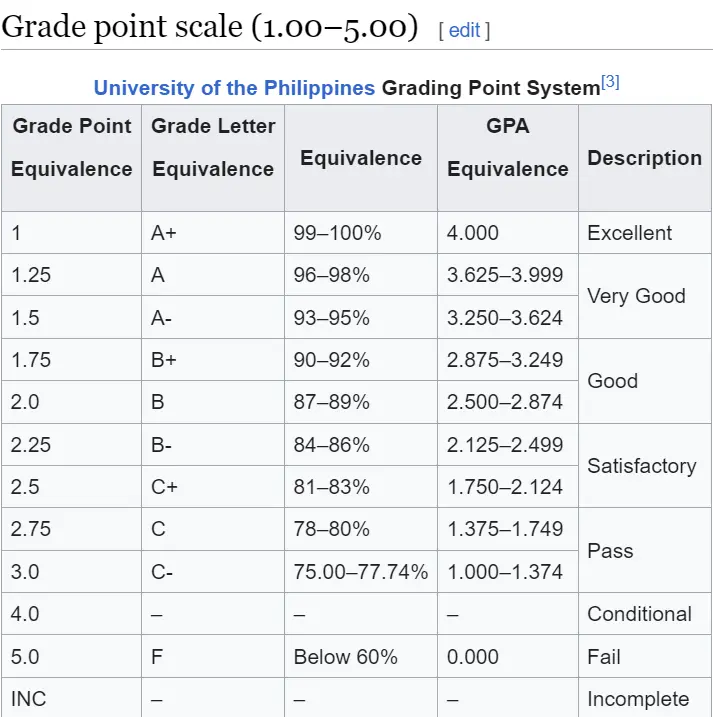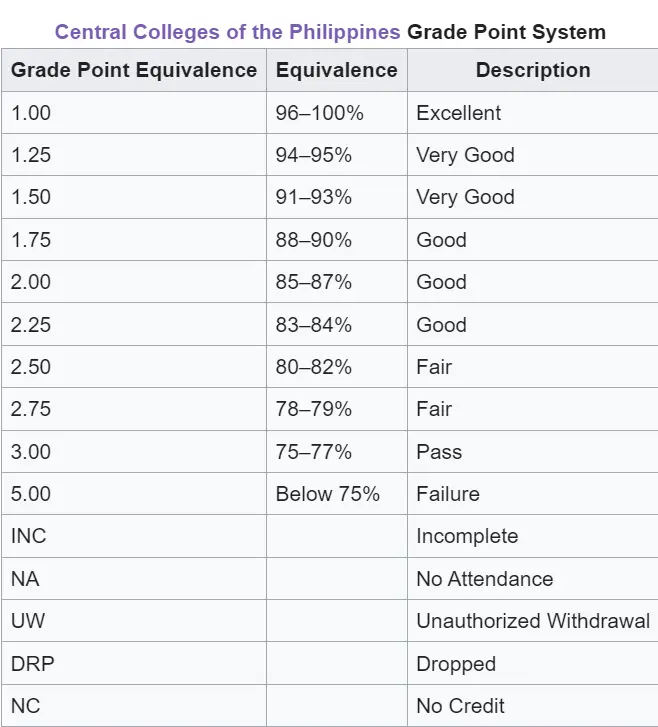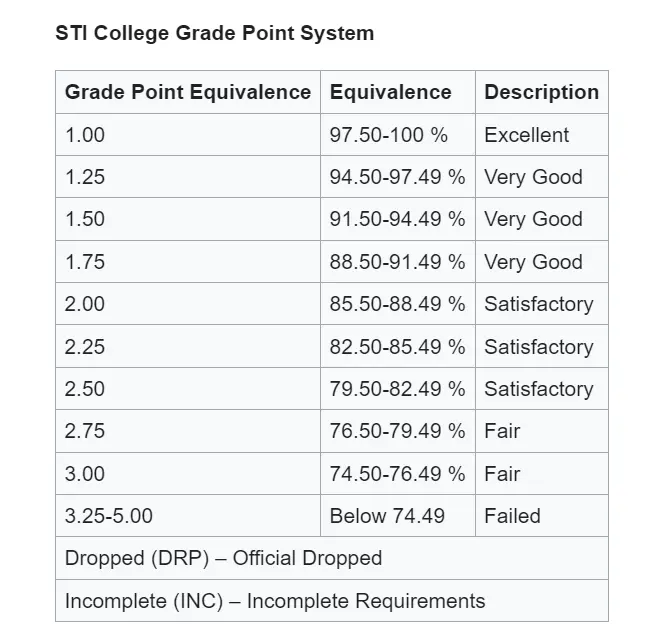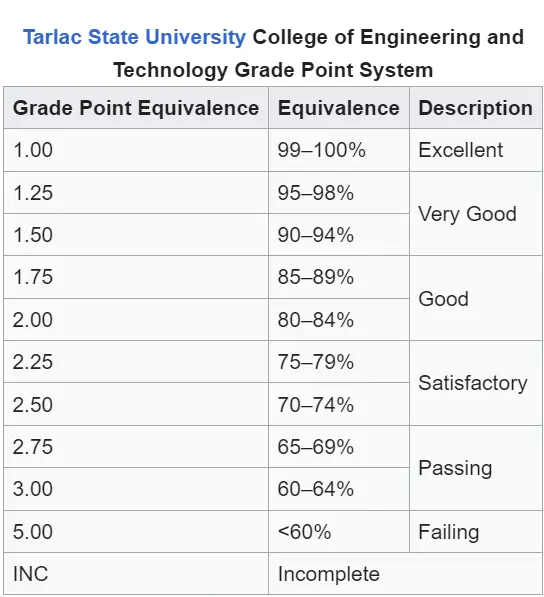Updated Grading System in Philippines 2024

Contents
- Lists Of Updated Grading System in Philippines
- Important Types of Grading System in Philippines
- School Grading System in Philippines
- College Grading System in the Philippines
- University Grading System in Philippines
- Overview of Grading Policies in Philippines
- How to improve your grades
- Comparison Between the Grading System In Philippines & Other World Grading Systems
- FAQs
- Conclusion
In schools, Colleges & universities we use grades to figure out how well we’re doing. In the Philippines, it’s not just about passing or failing; they look at how we’re progressing in our studies. It’s like a report card that helps everyone understand how much you’ve learned and where you stand in your school journey.
The grading System in Philippines paints a colorful picture of students’ learning journeys. Schools want to see if we’re learning the stuff and getting good at the skills they’re teaching. So, they use this grading system to check on our progress. And guess what? There’s this cool thing called a GWA Calculator that helps us figure out our grades easily.
Lists Of Updated Grading System in Philippines
Explore the different academic grading systems in Philippines listed below.
University of the Philippines Grading System

Central Colleges of the Philippines Grading System

STI College Grading System

University of Santo Tomas Grade Point System

San Beda University Grading System

Tarlac State University College of Engineering and Technology Grading System

Important Types of Grading System in Philippines
In the Philippines, the grading system can be a bit complex, but don’t worry, we’re here to break it down for you. Most universities follow either a 4-point or 5-point scaling system.
4-Point Scale
The most commonly used Scaling System
- A = 4.00 (Excellent)
- B = 3.00 (Good)
- C = 2.00 (Fair)
- D = 1.00 (Passing)
- F = 0.00 (Failing)
5-Point Scale
Used by some private schools, colleges & universities.
- 1.00 = Excellent
- 1.25 = Very Good
- 1.50 = Good
- 1.75 = Fair
- 2.00 = Passing
- 2.25 = Barely Passing
- 2.50 = Deficient
- 3.00 = Fail (3.00 is the lowest passing digit for students)
School Grading System in Philippines
Within the elementary and high school levels, a straightforward 5-point grading system is employed. The passing grade is set at 2.50, equivalent to a C. Achieving a score of 90 or above is considered outstanding! For senior high school students, you can also find out how to calculate your GWA in SHS, making it easier to track your overall performance.
| Grade Scale | Grade Description | U.S. Grade Equivalence |
| A (97-100)/1.00 | Excellent | A |
| A- (94-96)/1.50 | Very Good | A |
| B+ (91-93)/1.75 | Good | A- |
| B (88-90)/2.00 | Above Average | B+ |
| B- (85-87)/2.25 | Average | B- |
| C+ (80-84)/2.50 | Below Average | C |
| C or D* (75-79)/3.00 or 3.50 | Barely Pass | D |
| D* or F (0-74)/4.00 or 5.00 | Fail | F |
International School Manila Letter Grade System
| Grade Point Equivalence | Letter Grade Equivalence | % Equivalence |
|---|---|---|
| 4.0 | A | 94–100% |
| 3.7 | A− | 90–93% |
| 3.3 | B+ | 87–89% |
| 3.0 | B | 83–86% |
| 2.7 | B− | 80–82% |
| 2.3 | C+ | 77–79% |
| 2.0 | C | 73–76% |
| 1.7 | C− | 70–72% |
| 1.3 | D+ | 67–69% |
| 1.0 | D | 63–66% |
| 0.7 | D− | 60–62% |
| 0.0 | F | below 60% |
College Grading System in the Philippines
The College Grading System in the Philippines helps to show how well students are doing in their classes. It uses both numbers and words to describe grades. There are also special marks for when work isn’t finished or if a student misses too many classes. Each college might have its way of deciding what these grades mean. Students can use a special tool to figure out their grades, which helps them know how they’re doing in college. You can also learn how to compute your grades in college with a comprehensive guide.
Check out the basic grading system in college in the Philippines
| Grades | %age | Description (General) | USA Grading |
| 1 | 99-100% | Excellent | 100-95=A+ |
| 1.25 | 96-98 | Outstanding | – |
| 1.5 | 93-95 | Superior | 95-90=B+ |
| 1.75 | 90-92 | Very Good | – |
| 2 | 87-89 | Good | 89-85=B |
| 2.25 | 84-86 | Satisfactory | – |
| 2.5 | 81-83 | Fairly Satisfactory | 84-80=C |
| 2.75 | 78-80 | Fair | – |
| 3 | 75-77 | Pass | – |
| 5 | < 75 | Fail | F |
University Grading System in Philippines
In the University of the Philippines, grades are given from 1 to 5, where 1 is the best and 5 is the lowest passing grade. The grades also come with words like “Excellent,” “Very Good,” “Good,” “Fair,” and “Passed.” Students get these grades based on tests, projects, and how much they join in class. They also calculate something called GPA to see how well a student is doing. This way, the system tries to show how students are doing fairly.
Understand their systems and check your progress. If you are a student from another university, like PUP or De La Salle, familiarize yourself with their grading systems. , if you are a PUP student, it’s essential to check out the PUP grading system.
Overview of Grading Policies in Philippines
Grading Guidelines in the Philippines:
- In the Philippines, colleges follow official grading procedures.
- Final grades are determined using a specified formula that includes various components such as Study/Project Design, Research/Thesis/Feasibility, and Practicum/OJT.
- Students who are unable to submit final term papers receive an ‘INC’ grade.
- The completion and submission of the thesis are crucial, involving an oral defense and the assignment of the final grade by the advisor.
- Students must complete examinations within the allocated time; failure to do so results in a 50% grade reduction.
- The SRMD community is responsible for encoding the completion grade and addressing any processing delays.
- Dropping a subject before the midterm is recorded as ‘Dropped’ on the student’s record.
- To drop a subject, students must submit a Drop form before reaching the maximum allowed absences, which is then verified by the professor and approved by the department’s Dean.
- If dropping occurs after the midterm due to valid reasons, such as illness, it is marked as ‘Drop in Good Standing.’
- A clearance certificate, obtained from the Head Office of College Affairs, undergoes verification and approval by the Chairperson/College Dean to complete the dropping process.
- Criteria for dropping after the midterm include avoiding failing grades, staying within the allowed absences, and adhering to college rules.
- The SRMD distributes final grades approximately 15 days after the final examination.
- Students have the right to address grade concerns by contacting the college’s official community before the start of the upcoming semester.
How to improve your grades
To boost your grades, take a look at how you study and try some different ways that might make it easier or more interesting. Here are some good study habits that can help:
- Find a comfy place to study.
- Cut down on things that distract you.
- Take short breaks during your study time.
- Spread out your study sessions.
- Set small goals for each study time.
- Give yourself a little reward for reaching your goals.
- Study with friends.
- Practice using pretend tests.
- Use your own words to understand things.
- Don’t be afraid to ask for help.
- Remember to take care of yourself too.
Comparison Between the Grading System In Philippines & Other World Grading Systems
The grading systems in the Philippines and other countries vary significantly in terms of scale, grading criteria, and interpretation. Here, we will compare the grading systems of the Philippines with those of the United States, the United Kingdom, and Australia.
| Country | Grading System | Highest Grade | Lowest Passing Grade |
|---|---|---|---|
| Philippines | 5-Point Scale (common) or 4-Point Scale (some universities) | 1.00 or 4.00 | 3.00 or 2.00 |
| United States | Letter Grades (A+ to F) or Numeric Grades (0 to 100) | A+ or 100 | D or 60 |
| United Kingdom | Numeric Grades (1 to 9 for GCSEs) or Letter Grades (A* to G for GCSEs and A to E for A-Levels) | 9 or A* | 4 or E |
| Australia | Letter Grades (HD, D, CR, P, F) | HD | P |
In the Philippines, the grading system can be a 5-Point Scale where 1.00 is the highest grade and 3.00 is the lowest passing grade. Some universities use a 4-point Scale like the U.S. system, where 4.00 is the highest and 2.00 is the lowest passing grade.
In the United States, grades are usually given as letters from A+ to F, with A+ being the highest and D being the lowest passing grade. Some schools also use numeric grades from 0 to 100, with 100 being the highest and 60 being the lowest passing grade.
In the United Kingdom, GCSEs are graded from 1 (lowest) to 9 (highest), with 4 being considered a passing grade. For A-Levels, a letter grade scale is used, with grades of A* (highest) to E (lowest).
In Australia, the grading system includes grades such as HD (High Distinction), D (Distinction), CR (Credit), P (Pass), and F (Fail). HD is the highest grade and P is the lowest passing grade.
FAQs
Q: What is the grading system for DepEd?
The Department of Education (DepEd) in many countries, including the Philippines, follows a standardized grading system to assess and evaluate students’ academic performance. The grading system typically consists of letter grades and numerical equivalents.
Q: What is 1.75 grade in college Philippines?
In the Philippines, the grading system in colleges often uses a numerical equal for letter grades. A grade of 1.75 is generally considered a Very Good grade. The corresponding grade point for 1.75 is around 89-88%.
Q: What is A+ A B+ grading?
A+: Exceptional performance, typically 97-100%.
A: Excellent achievement, usually 90-96%.
B+: Very good level of performance, around 87-89%.
Keep in mind that grading scales may vary between institutions.
Q: Is 89.5 with honors in DepEd?
An average of 89.5 is likely good, but honors eligibility depends on the school’s rules. Check the school guidelines or ask for specific criteria for honors.
Q: What grade is required to pass a class?
A: Typically, a grade of 60% or higher is considered a passing grade. Check your institution’s specific grading policies for confirmation.
Is a D a passing grade?
Yes, generally, a grade of “D” is considered a passing grade in many educational institutions. But, it’s important to verify the specific grading policies of the institution you are attending, as passing grades may vary.
Conclusion
In conclusion, knowing how grades work in the Philippines is important for students and parents. The grading system in the Philippines uses letters and numbers to show how well you’re doing in school. Whether you want an “A” or passing, understanding the system helps you see how you’re doing. Keeping up with the grading rules makes sure everyone is treated in the Philippines’ schools.






